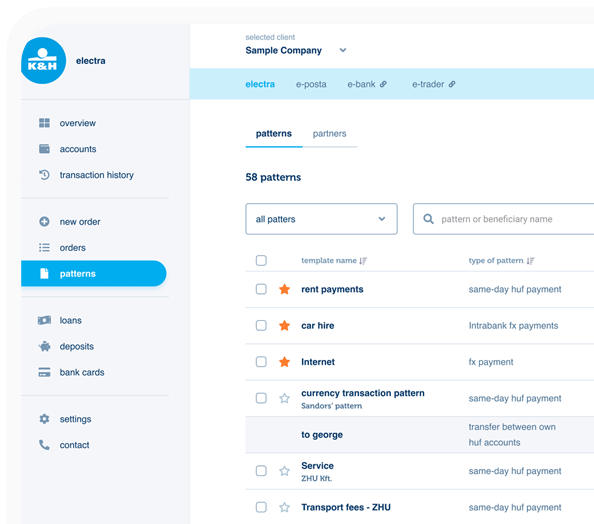Top AI Trends Revolutionizing Banking in 2025 You Can’t Ignore: 7 Strategic Areas Where Leading Banks Excel
AI is reshaping the banking sector worldwide at an increasingly rapid and dynamic pace. According to some estimates, it could increase financial institutions' profits by 9% within a few years. However, it's also becoming evident that the gap is widening between banks at the forefront of artificial intelligence (AI) adoption and those falling behind. The leaders are characterized by their approach: they don't merely think in terms of isolated initiatives but transform their entire organizations —having realized that the technology's true value lies not simply in cutting costs but also in fundamentally changing everyday experiences for customers and employees.
According to a Citigroup report, AI could increase the global banking sector's profits to USD2 trillion by 2028, representing a 9% growth. Financial sector leaders are optimistic about this. In a proprietary survey, 93% of them expect higher profits thanks to AI – cites the report. The AI revolution taking place in the financial world now extends beyond simple automation and cost reduction, transforming entire areas, organizations, and processes.
The Evident AI Index ranking, the latest version of which was released in late 2024, evaluates 50 major banks on AI use based on four indicators: talent, innovation, leadership, and transparency. While clearly showing how AI implementation has accelerated in the banking sector, the ranking also highlights the growing gap between those leading in AI adoption and those who are not. US and Canadian banks (such as JPMorgan Chase and Capital One) lead the way, occupying 7 of the top 10 positions. (The Canadian banks in the report appear in the first half of the index, certainly helped by the significant AI centers established in Toronto and Montreal.)
European and Asian competitors are catching up: Australia's CommBank made it into the top five, while the UK's HSBC secured seventh place. France's BNP Paribas narrowly missed the top 10. (An interesting detail is that they chose to partner with Mistral AI, the European alternative to OpenAI, typically used by other banks.)
Unfortunately, only two banks on the list publish specific financial estimates of AI-generated revenue, but these are certainly noteworthy. America's JPMorgan Chase estimates annual results attributable to AI of between USD1 billion and USD1.5 billion, while Singapore's DBS reported that AI generated SGD370 million (approximately USD280 million) in results for them in 2023, more than double the previous year.
It's make or break: integrating AI
According to McKinsey & Company's latest study, banks excelling in AI implementation do four things particularly well:
- They develop a bank-wide vision of AI's benefits and the values it creates. They view the technology not merely as a cost-cutting tool but also as something that, while increasing revenues, significantly improves customer experiences and employee work.
- Their use of AI is motivated by business value, so they transform entire areas and processes rather than just launching narrow projects in isolation, such as a chatbot. Although the latter can be implemented quickly with low risk, it may not necessarily bring significant financial benefits in isolation.
- They build systems that rely on multiple AI agents working together. Complex banking tasks, such as evaluating a corporate loan application, consist of many different steps and require processing various types of data. Traditional automation cannot easily solve this, but new, generative AI-based systems using multiple agents, predictive AI, and other tools can. Using this system across the entire bank requires a complete, AI-based technological foundation.
- They provide appropriate support by creating teams where business representatives, IT professionals, and AI experts work together. Support includes a central AI control center that coordinates decisions, oversees operations, establishes unified rules for risk management, and ensures that AI solutions can be used in other areas.
 Multiple AI agents working together – created with MidJourney
Multiple AI agents working together – created with MidJourney
Let's examine the 7 strategic areas in AI usage where leading banks excel, based on McKinsey's study.
1. Integration of Banking AI Strategy: Moving Beyond Pilot Projects
For a long time, financial institutions typically experimented with smaller, scattered AI projects. However, market-leading companies have realized that true success requires embedding AI throughout the organization. In reality, AI becomes an essential part of everyday tasks, from data gathering to decision-making. We can see this happening in several ways:
- Creation of Centers of Excellence: These centers provide expertise, rules, and coordination for AI initiatives.
- Strong connection between data and AI strategy: Proper data handling and preparation are crucial. Without them, AI-based solutions cannot function.
- Changed corporate mindsets: Banks encourage data-driven thinking and decision-making at all levels.
Truly effective financial institutions are not merely implementing technology; they are also creating an environment where AI naturally integrates into tasks.
2. Assessing AI's Business Impact: Enthusiasm Alone is no Longer Enough
When implementing AI, producing tangible business success becomes increasingly important; financial institution leaders understandably want a clear picture of how investments pay off. This requires a new approach to measurement:
- Using complex evaluation models: When measuring return on investment, it’s not enough to focus solely on direct cost reduction. Quality improvements (e.g., more satisfied customers, reduced risks) must also be considered. For example, if a chatbot reduces costs while improving customer experience, both factors should be assessed.
- Connecting business and AI metrics: It's essential to directly see how AI developments affect key business indicators and performance indicators (KPIs).
- Balancing between short and long-term plans: In addition to initiatives promising immediate results or quick wins, long-term strategic advantages should also be emphasized. The most successful financial institutions find a middle ground between quick returns and long-term strategy, continuously refining their investments.
3. The Rise of Generative AI: New Horizons in Finance
Large language models (LLMs) and generative AI technologies not only assist with automation but also open entirely new horizons:
- Domain-specific language models: LLMs tuned for finance can provide more accurate and relevant answers to professional questions than general-purpose versions.
- Applications handling multi-source data: These applications can simultaneously analyze text documents, images, audio, and other data, providing a more complete picture of a situation (e.g., in loan evaluation).
- Human-AI collaboration: AI doesn't replace people but complements their knowledge. AI assistants can help bank employees find information faster or solve complex tasks.
- Novel product development: Entirely new financial products and services can be created with the help of generative AI.
 AI doesn't replace people but complements their knowledge – created
with MidJourney
AI doesn't replace people but complements their knowledge – created
with MidJourney
4. Collaborative AI Systems: The Next Step
Systems consisting of multiple AI agents enable financial institutions to efficiently handle complex processes. These systems go beyond simple automation, creating a workforce capable of independently solving problems, supervising tasks, and supporting decision-making.
- AI assistants built on internal knowledge bases: These can interpret the bank's internal policies, processes, and data.
- Self-learning systems: For example, a fraud detection system continuously learns from previous cases, becoming increasingly accurate at identifying suspicious money movements.
- Collaboration between AI agents from different specialties: For solving complex tasks, multiple AI agents trained for different specialties can work in coordination.
- Human and AI teams: Pairing humans and AI agents may yield the best results, leveraging the advantages of both sides.
5. Personalized Customer Experience: Hyper-Personalization
With AI, banks can now reach both general customer groups and individuals, allowing them to precisely personalize their services and offers.
- Proactive financial advising: Banks can anticipate future financial needs based on customers' previous money movements and behavior, and make proactive suggestions.
- Services tailored to the customer's life situation: For example, if a customer is planning to buy a home, the bank can automatically offer appropriate loan products.
- More sensitive dialogue: Systems may be able to detect the customer's mood (e.g., based on tone of voice, text messages) and adjust communication accordingly.
- Unified experience across all channels: With AI-based assistants, customers can receive the same personalized service regardless of which channel they use to contact the bank.
6. Enhancing Efficiency: Supporting Human Work
AI doesn't just automate tasks; it also helps bank employees work more effectively. Increasing efficiency here isn't just about speed; it allows bank staff to focus on higher value-added, more creative tasks while delegating routine tasks to AI.
- Decision support in complex situations: AI-based analyses can help professionals make better decisions.
- Fine-tuning workflows: The system can optimize tasks in real-time, considering workload and priorities.
- Faster access to knowledge: AI can help experts quickly find relevant information and best practices.
- Assisting software development in finance: Code generation and automated testing can accelerate the development of banking software.
7. Risk Management and Security: AI in the Service of Safety
AI naturally plays an essential role in banking security, but the most advanced banks in this area use AI not just as a protective tool but also to strengthen customer trust.
 Systems can recognize unusual behavioral patterns that may indicate fraud
– created with MidJourney
Systems can recognize unusual behavioral patterns that may indicate fraud
– created with MidJourney
- Customer behavior analysis: Systems can recognize unusual behavioral patterns that may indicate fraud.
- Fraud prediction: AI-based models can identify suspicious signs before fraud occurs.
- Cybersecurity: AI-based systems can respond to cyberattacks in real time.
- Security testing with synthetic data: Security systems can be tested while protecting sensitive customer data.
- Testing own systems with adversarial AI: This method can reveal weaknesses in a bank's systems and prepare it for real attacks.
The transformative impact of AI on the banking sector goes far beyond mere technological modernization; it's also about how the relationship that financial institutions maintain with their customers and employees is changing. Successful banks have recognized that AI's true value lies not just in cost-effectiveness but also in fundamentally changing how people connect with their finances.
For financial professionals, this change can be liberating, allowing them to focus on work where the human element ‒ creativity, complex problem-solving ‒ can truly flourish. However, this transformation also comes with challenges; alongside managing security and ethical issues, banks must find the balance between innovation and trust. The truly successful financial institutions will be those that not only implement AI but also put the technology in the service of human-centered banking operations.









